Pinterest And Instagram For Writers With Frances Caballo
How can you effectively use image-based social media to reach readers and sell more books?
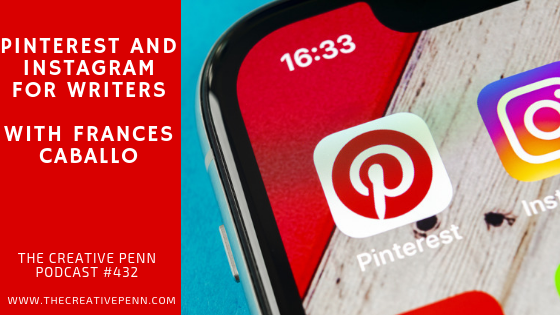 How can you avoid time-wasting but still build a community? I discuss these questions and more with Frances Caballo in today’s interview.
How can you avoid time-wasting but still build a community? I discuss these questions and more with Frances Caballo in today’s interview.
In the intro, I mention my personal update and how I organize and batch my time, as well as Things app.
Plus, if you’re unhappy with the changes at Mailchimp, check out my tutorial on how to set up ConvertKit for your author mailing list.
Today’s show is sponsored by Draft2Digital, where you can get free ebook formatting, free distribution to multiple stores, and a host of other benefits. Get your free Author Marketing Guide at www.draft2digital.com/penn
 Frances Caballo is the author of Social Media Just for Writers as well as Avoid Social Media Time Suck, which is super important, and other books on blogging and social media. She provides coaching and social media management for writers.
Frances Caballo is the author of Social Media Just for Writers as well as Avoid Social Media Time Suck, which is super important, and other books on blogging and social media. She provides coaching and social media management for writers.
You can listen above or on iTunes or your favorite podcast app or watch the video here, read the notes and links below. Here are the highlights and full transcript below.
Show Notes
- On the changes in social media in the past 5 years
- The continued importance of visual images on social media
- The importance of Instagram Stories if you’re using Instagram
- How to find hashtags to use with Instagram
- Using Pinterest to drive traffic to a website
- How Pinterest differs from Instagram in terms of marketing vs. brand awareness
- Why the scattergun approach to social media doesn’t work
You can find Frances Caballo at FrancesCaballo.com and on Twitter @CaballoFrances
Transcript of Interview with Frances Caballo
Joanna: Hi, everyone. I’m Joanna Penn from thecreativepenn.com. And today, I’m here with Frances Caballo. Hi, Frances.
Frances: Hi, Joanna.
Joanna: It’s been ages, and we’ll get into that. But just for an introduction for anyone who doesn’t know you:
Frances is the author of ‘Social Media Just for Writers’ as well as ‘Avoid Social Media Time Suck’, which is super important, and other books on blogging and social media. She provides coaching and social media management for writers.
Frances, it was 2014 when you came on the show talking about social media, as we just said. It feels like so much has changed but it also feels like not much has changed because we’re still talking about social media.
What do you think has changed since 2014? In the last five years, what’s the shift in the social media environment?
Frances: The interest in Facebook has dropped about five percentage points. I have friends who have dropped Facebook for Instagram. I, personally, don’t use my Facebook page account very much anymore. I am going to be focusing more on Instagram.
I still use Twitter. I think Twitter is still important for authors. It’s a great news site but it’s also a great way to connect with colleagues who write in your same genre and to help authors in your genre share their posts, share their books and meet readers. There are a lot of readers, a lot of librarians on Twitter.
Twitter is among the top six most popular social media networks, but we don’t need to forget about it and it is going through some revamping. So that’s good. And now you can do 280 characters whereas 5 years ago you could only use 140 characters. But it’s better not to use the 280 characters because text-heavy posts don’t really work on Twitter.
On Facebook, even though Facebook started out as a pretty much a text-only app just like Twitter did, you should never post anything to Facebook without an image or a video. Now, with the exception that sometimes text-only posts do work on Facebook.
On my Facebook profile, I wrote a pretty text-heavy post about a German Shepherd dog that came after me barking and snarling. I wrote about that experience on Facebook and I got huge engagement. But that’s the exception.
What happens on social media, in general, and we’re going to exclude Instagram and Pinterest from this conversation just for this one point, is that you have to use images. Images are what attract the eye. The brain can process images 60,000 times faster than text.
People remember text in images better than they remember what’s said in a text post. So images are really important.
On a blog post, they’re really important. You have to have at least one image for every blog post. Multiple images are good on a blog post provided that they’re not all stock images. So there’s that.
Early on, back in 2010, I was taking a lot of social media workshops from this one person, I forget her name now. And so, she said, ‘You should always allocate one social media as your fun site.’ And so, for a long time, Pinterest was my fun site.
And then, that became more important for my business, so then I made Instagram my fun account. Well, now I’m revamping my Instagram account. In fact, it’s filled mostly with Black Labs, so I’ve given my Black Lab an Instagram account. And I just started her account on Friday and she already has I think almost 50 followers. So she’s doing really well.
But I’m always taking social media courses, even though I specialize in social media and I read a lot of social media posts. And I realize I’m not giving you any opportunity to ask any questions, Joanna. But I like to take courses.
I’ve signed up for two courses, one is through Social Media Examiner, it’s their society, and I’m taking a course from Kay Coroy. She’s British and she’s an Instagram teacher. What she focuses on for Instagram, is your sole brand essence and finding what your brand colors are and sticking to those colors on Instagram. So that’s why my dog now has its own Instagram account because I’ll be focusing on my brand colors. So, all right, it’s time for questions.
Joanna: We’ll be circling back on Instagram and images.
But just sticking with what’s changed, so I think your point about continuing to learn is also important because, as we know, these sites change all the time. They change their functions. They change what’s available.
But just going back to Facebook, because this is really interesting, and I just wondered what your thoughts were on why Facebook is dropping. So, when we think back to Myspace, before Facebook, that was taken over. Everyone did that and then it was Facebook and Myspace went back to being very niche.
Is that just the natural trajectory of a social media site? And then, of course, Facebook might’ve seen that coming because they bought Instagram. So is it a natural progression or is it a backlash against the privacy issues and the big tech issues that Facebook is facing? Because, of course, authors use Facebook for advertising. It’s very important to a lot of businesses.
What are your thoughts on what’s happening with Facebook?
Frances: I think one of the things was the way the Russians were able to affect the outcome of the election of Donald Trump in this country, and how sites were able to use custom audiences that were really horrible in controlling the advertising for that election. I think that had a lot to do with the backlash against Facebook.
They used to have terrible custom audiences like Jew haters. It’s a terrible custom audience to have for advertising on Facebook. Facebook has gotten rid of a lot of those custom audiences and has really worked on that.
The other thing against Facebook is its algorithm, especially for businesses. And authors may not see themselves as businesses but if you have a Facebook author page, you have a Facebook business page, and so the algorithm for business pages is such that only 2% of what you post on your Facebook business page will actually penetrate the News Feed, unless you buy advertising.
Facebook has to monetize itself. The way it monetizes itself is through advertising. So if you want to do well on your Facebook author page, which is a Facebook business page, you have to advertise.
And I think people are upset about that. People like Toyota and Mercedes, big brands, that’s just part of their marketing budgets. With a lot of especially indie authors, that’s difficult to do.
Mark Dawson has a fabulous Facebook advertising course, and I recommend that all authors take this course, but you can’t do much with a Facebook author page unless you advertise and unless you know how to use Facebook advertising well. So that’s difficult.
I used to say that every author had to have a Facebook business page. Now I don’t.
Joanna: Well, that’s interesting. A question about news sites. I have not used Snapchat, now called Snap, and I have not used TikTok, which I only really heard about when I was in London last, and the whole underground was plastered with signs for TikTok.
And then I’ve heard that it is a music video or something like that. Anyway, I have not tried either of these things. Many authors do not want to get on another social media site.
What are your thoughts on the new emerging sites?
Frances: Snap is really popular among the youth and millennials. The author of ‘Wool’, I think it’s Hugh Howey, he was able to increase his emailing list by galvanizing this following on Snap by adding 11,000 people to his email account.
So if you’re a YA author and you want to galvanize your readers on Snap, then that’s a site to use but to know how to use it well because your posts disappear once people read them. And that was my issue with Instagram Stories.
I didn’t think they were a viable issue for authors because you work on creating an Instagram Story and then it vanishes within 24 hours. But now you can archive them, so now I like Instagram Stories.
TikTok I just looked at this morning and it’s videos and it’s music and it’s all young adults. So I didn’t see anything else, so that would be a place for YA authors. But I’m not yet sure how they could use it but they could definitely use Snap. Hugh Howey is great at using social media but he’s great at using Snap also.
Joanna: How did you find out about Hugh and Snap?
Frances: It was on his blog years ago. Probably two years ago.
Joanna: I’ll see if I can link to that in the show notes. Let’s circle back on Instagram because I, like you, have not really used Facebook on my personal side for years mainly because my mom’s there. My mother-in-law is there. It’s kind of a thing where I’m not necessarily sharing so much.
I’ve started using Instagram and I really love it too, and kind of like you, I’ve started to go, ‘Oh, maybe I should be using it more like a business, but how do I do that?’
If people have an Instagram account and they have done what you’ve done like, ‘Here’s a few a few personal things,’ how have you been revamping Instagram for business use?
Frances: I haven’t yet but I’m going to, but I do manage accounts for other people. And what I do is I create Instagram Stories.
If you’re going to be serious about using Instagram for business, you have to use Instagram Stories. They don’t appear in the News Feed. They appear on top of the News Feed and they are the circles. And what you can do is you can highlight an Instagram Story and it stays right beneath your bio. And so, I recommend that you use Instagram Stories. They’re just really powerful.
Joanna: Give us an example of what is an Instagram Story, if people don’t know.
Frances: Some people think it’s a story and you have to do a lot of writing because we think of stories as writers, right? But it’s not. You can use Canva.
Canva has a template for Instagram Stories. You can use multiple pages in your Instagram Story, but I don’t recommend that you do that because the first page has to pass, and then the second one comes up and people usually don’t wait that long.
It’s just an image with text on it but you want to have the text low enough so it doesn’t get caught up in the Instagram type. And you could say, ‘This book is on sale for two days,’ or, ‘This book is free now, come to my website.’
You can do an Instagram Story about, ‘This is my favorite place to walk. This is my favorite place to write.’ Whereas Instagram images are these block images, these square images, Instagram Stories are the length of your smartphone, and so you have more visibility, a bigger place to write.
Joanna: I like using the images. I understand that. I’m doing that quite well now, sharing my images. I’m doing some hashtags. But Stories I really haven’t got the hang of.
I don’t really know what is a story and what is an image on the page. And also, I think, we don’t want to always be saying, ‘Here’s my book. Here’s my book.’ So give us some ideas of what are the other things that we put in a story if we are just living a normal life?
I don’t really have as much of a story to tell today. So what do we put there?
Frances: It doesn’t have to be this big thing. It could be your husband taking a picture of you writing. It could be somebody taking a picture of you riding your bike through Bath.
The story is simply, ‘I’m working on my next book,’ or, ‘This is where I like to ride my bike.’ They’re just images about your life or about other authors.
You may be holding a book and reading it and it’s by another author, and you could say, ‘I love this book by…’ And so, it’s just a larger image that gets more visibility. It could also be a video.
It doesn’t have to be a static image. It can be a video. And they’re important because they get greater visibility. People don’t have to thumb through their News Feed to see them. They’ll see them at the top of the News Feed. So you just have greater visibility. So I’d say they’re for things that you really want to get out there.
Joanna: I think still that we haven’t really tackled the big thing in the room which people wonder how social media sells books, and Instagram feels even harder. So Twitter, when I share a tweet, I can put a direct link to a bookstore on Twitter and I can like, ‘Here’s me with my new book. And here’s the buy link.’
But on Instagram, you can’t even put a link in the image or the text.
How do we go from doing a nice image and a story to actually someone being able to buy the book?
Frances: Right. So you change the link in your bio. On your bio, it may say ‘thecreativepenn.com’ or it could be ‘jfpenn.com.’ But if it’s for a specific book, you would say ‘jfpenn.com/’ and the name of a book. And so you would say, ‘Go to my bio and download.’
Joanna: And you only need to get one link. I’ve been using Linktree, which is you can put multiple links. It’s premium so you pay like $6 a month, I think, and it pops up and it has multiple links on. And, of course, I’m @jfpennauthor on Instagram so people can go and see Linktree. So that’s something I use for those multiple links.
Probably the other thing that stopped me with Instagram is I don’t know how to schedule it. I’ve heard of some things that people are using. I don’t like to sit on social media all the time.
Do you know of any good scheduling tools for Instagram that would make it easier for me?
Frances: You could use Buffer. You could use Later. I like Later. You could also use Hootsuite. And I think there’s Schedugram.
Joanna: Okay. You can use Buffer because I have Buffer. Maybe I just haven’t looked at it properly.
Frances: You have to have a paid account for Buffer?
Joanna: Okay, because at one point, you couldn’t schedule things I think on Instagram, I think when it first came out. So if we’re going to schedule, like you talked there about a color palette.
Any other tips on how you curate your account?
Frances: It doesn’t have to be all about you. It could be author quotes. It could be writing quotes. My philosophy about social media is that, for example, I don’t have competitors on social media, I have colleagues.
Rachel Thompson does what I do, and she includes me on her blog, I include her on my blog. I promote her events, I promote her chats. She invites me onto her chats. So we do the same thing for the same demographic, but we’re colleagues. I refer people to her, she refers people to me.
So it’s sort of a philosophy, ‘Don’t look at social media as you’re up against your competition. You have all these colleagues on social media.’ And that’s the beauty about social media, I think. At least that’s my perspective about social media. I think about it in terms of colleagues.
Joanna: I think the same thing. It’s always like the coopetition is what I’ve always said, the cooperating with your so-called competition. And, on Instagram…see, on Twitter, again, I just say from, you know, @Caballo_Frances because I know your handle on Twitter.
On Instagram, we tag people who we want to tag, right?
Frances: Yes. On Instagram, you can use up to 30 hashtags. You should use at least 11 because hashtags are keywords and the more keywords you have, then the more likely people will find you. And there’s a trick to adding more hashtags, if you want to, and that’s to put an ampersand in front of the second-to-the-last hashtag. And then, you can add more hashtags.
Joanna: Ooh, a little trick there.
Frances: For my clients, I try to use a minimum of 25 hashtags.
Joanna: How do we find those hashtags?
Frances: One of my clients is a psychologist who’s writing a book. If it’s about depression, I will look up hashtags on Instagram for depression.
Or you can type in ‘Depression’ on the search bar on Instagram, and then look at posts and see what they’re using. And if you have an Instagram business account, which you can only have if you have a Facebook business account, then you can see which hashtags are performing well and which aren’t.
And then, you can get rid of the hashtags that aren’t performing well and keep the ones that are performing well.
Joanna: That’s an interesting thing because I’ve seen some people say you should go back into your account and, say, delete some posts, change up the hashtags, that type of thing. Which seems to me a lot of work.
Frances: I wouldn’t.
Joanna: So because it’s a feed, so you could pick up a photo that you had a year ago and then repost it.
What about reusing photos?
Frances: I will look at your analytics and see which photos have done well in the past, and then reuse those, definitely.
Joanna: Because that’s the other thing. I take a lot of photos but still there are some that I’d like…say, if I’m talking about, ‘Oh, I have a sale on a book that features Rome,’ I want to go back and find my Rome pictures and kind of post them again.
Frances: Right. Yeah.
Joanna: Okay. Just one more thing on images. It’s fine when you’re using your own images, but what about, like you mentioned, Canva has a template, how do we know that we can use an image? I think there’s a misunderstanding of images on the Internet. What about intellectual property around images?
How do people know that they can use an image if it’s not their own?
Frances: Right. Well, when I said ‘template on Instagram,’ I meant that they have the template for the correct size of a post but they also have canned images. And Canva will tell you if they’re free or if they’re not free.
You can also buy images on Canva. I subscribe to a service called Freepik, and it’s, I don’t know, $60 a year. And some of the images are pretty goofy and I would never use them but some of them are really nice so I do use the nice ones.
I don’t use the ones that scream ‘Stock photo, stock photo, stock photo.’ So what I don’t do is download images from Pinterest because those have been taken by people. But I do use photos that I get from my service and I do use photos that I can buy on Canva.
Joanna: Actually, just on Canva, I think they’ve just introduced an Easy button that helps you resize everything. Because this is the problem with social media, right? Twitter has one size, Facebook has another size, Instagram has two different sizes. It’s ridiculous. But I think there’s now an Easy button. I think it’s in their premium section.
Frances: Yes, it is.
Joanna: I just thought I’d mention that to people because it’s very annoying. Okay, so yes, watch out for intellectual property on images.
You mentioned Pinterest and I wanted to talk about Pinterest particularly. You have a little book on Pinterest which people can get from your website.
What are the differences between Instagram and Pinterest?
Frances: It’s an excellent question. Pinterest versus our discussion five years ago or four years ago, whenever it was, you can now use hashtags. And so, it’s important to use hashtags on your images. Instagram doesn’t have pin boards, virtual pin boards.
Pinterest has virtual pin boards so you can develop pin boards on Pinterest around the book you’re writing, the books you have written, the books you plan to write, favorite places to go to, certain social media accounts, great book stores, great libraries, author quotes.
At first, it was Black Labs, I have a Black Lab one. So, at first, I was using Pinterest as my fun account. I really built it up with social media pin boards, with my blog pin board, and author quotes, and bookstores. And then it went on Barcelona and hairstyles, that kind of thing.
But I only use Pinterest now to drive traffic to my website. With every Monday blog post, because my Monday blog posts are about social media, in some way, I always create the top image which is for social media, and then at the bottom I put a Pinterest graphic.
It used to be ‘Pin an image,’ now I like an image to my pin board on Pinterest for my blog. And then, on Fridays, I do a roundup of the week’s best posts and on that one I do a quote of the week and I create a Pinterest graphic with an author quote. And then, I like that image and I like it onto my pin board on author quotes.
Twitter is the number one referral source to my website. Pinterest is the number two referral site to my website. So I use it for website traffic.
Joanna: This is interesting to me because how I use Pinterest very much is for images with no text on, and the same with Instagram. And what I’m getting the sense from you is that, for marketing purposes, adding text onto the image to get traffic is really important because on Pinterest you might not see any other text. You might only see the image, right?
Frances: Right.
Joanna: Are we still having image dominance with a quote, or are we just having a quote on a plain background?
Frances: On Pinterest?
Joanna: Yes.
Frances: Well, you see a lot of images without quotes on them. My images always have quotes on them. So Fridays, it’s author quotes. Mondays, it’s the topic quote, topic headline or something.
But you see both on Pinterest. The fun side of my Pinterest account is about dogs, so I look for quotes with dogs in them. And then, what I pin to Pinterest always has writing on it.
But, as I look at Pinterest, there are a lot of images without any writing on it. So you can do it both ways. I don’t think there’s a correct way to do it.
Joanna: It’s interesting because I’ve started much more clicking through…what I like about Pinterest, as opposed to Instagram, is I will go on Pinterest, find something I like, and click through to read the website.
So this, to me, seems why Pinterest would be better at traffic generation because I can actually click it. I’ve got a new website since we talked last, called ‘Books and Travel.’
Frances: Oh, that’s right. I know about that.
Joanna: booksandtravel.page, in case anyone’s interested. But there, I’m going in and pinning all the pictures and people will, hopefully, find them and like and click through to my website. Now, it’s brand new so I don’t really have any data yet.
But I’m struggling with Instagram. My feeling is that Instagram is better for brand awareness, whereas Pinterest might be better for traffic.
Frances: Exactly. The founders of Pinterest say that it’s not a social media app. It’s a browser.
Joanna: Ah, that’s interesting. Because I use it for research, so I might go in there and say…I wanted to find the place where they did ‘Avatar’. It’s a place in China. It’s a national park with these amazing landscapes.
I went in and just typed, ‘China, National Park, Avatar,’ and got all the images that I wanted to look at and write about in my novel. So, yeah, I used it as a browser. Totally.
Frances: Absolutely.
Joanna: Fantastic. That definitely gives me a clue.
The other thing I’d heard about Pinterest is from Social Media Examiner, which is a great site, that Pinterest drives purchases more than other social media.
Frances: It does.
Joanna: Should we have prices on there?
There is a business Pinterest, isn’t there, where you can put prices and things?
Frances: Everyone should have a Pinterest business account. Every author should because then you get free analytics with your business account and you can put prices on your images.
Joanna: I still have a personal Pinterest account. I haven’t gone the business route. And this is what’s so interesting…and for people listening, you and I have known each other online for 10 years, I think, since Twitter back in the day. I think that’s how we met originally.
And it feels like I still haven’t got a handle on everything and I know there are people listening who feel quite overwhelmed with all of this. So this is your other superpower, your book ‘Avoid Social Media Time Suck.’ So now we’ve done lots of technical things.
Tell us how do we avoid social media time suck with all of this going on?
Frances: It’s really easy. The first step is to know who your reading demographic is. So if it’s YA, you know that they’re most likely not going to be on Facebook, so don’t bother with a Facebook author page and just keep it personal and that’s fine. Definitely use Instagram. If you’re brave, use Snap.
Supposedly, YA readers are on Twitter. I have a hard time believing that, but they might be. But definitely use Instagram.
If you are a romance author you have to be on Facebook and I would say you have to be on Pinterest and Instagram. So what I’m saying is don’t use everything. Don’t use Facebook, Snap, LinkedIn. Google+ doesn’t exist anymore. I mean, just don’t use everything. Focus and start with one account or one application that you know that your reading demographic is on and learn it.
And then, maybe add a second one. And then just stick to those two. You don’t have to be on everything. You don’t have time in a day to be on everything and you don’t have the resources to pay someone to be on everything. And so, even I don’t focus on everything. I only focus on certain social media brands. So don’t be on everything.
And then, the next step is to know that 80% of what you post should not be about you, 20% can be about you, and to use a scheduling application, whether it’s Hootsuite or it’s Buffer or whatever you choose, use it.
You should probably get the paid account. I think with Buffer it’s $10 a month. This is not very much.
Schedule everything in the morning and then you can just walk away from it. Spend like 15 minutes scheduling, and then go back to your writing. Go back to your day job. Go back to walking your dog. Whatever you do, do that.
And then what I do is at the end of the day, I’ll go back and I’ll look at what’s happening on social media because social media is social. You can’t just post things and then never interact with anybody. It won’t get anywhere.
Interact with people, answer questions, ask questions, follow people in your niche or in your genre that you look up to. Go to Facebook, comment on other people’s stuff, retweet other people’s stuff. Look at Instagram, like things, share things, comment.
Joanna: Be sociable. I think my tip would be, like you said, you need to time block this. So, for example, what you could say is on a Sunday afternoon you fancy doing some images or you schedule like, ‘Two hours, I’m going to get all my images together,’ for the whole month.
And then you could do even 15 minutes a day checking and responding, right?
Frances: Right. And I always like Joanna’s term which is social karma. It always comes back to you. And the thing about social media is it’s important to be authentic and to retweet, reshare, leave comments on Instagram.
Because people thought that all you had to do to do well on Instagram was post images and use hashtags. Well, no. You need to do more than that. And you need to do Instagram Stories but you also need to go through your News Feed, like and leave comments, and follow other people.
Joanna: And the other thing I was going to say is, and we’re talking about a business perspective here, selling books. So we’re not just doing this for no reason. We have a good bio that goes to a good author website.
We need the functionality in place for it to actually achieve something, or e-mail sign-up list or something.
There’s no point having a hundred million followers if you’re not achieving your goals with it.
Frances: Right. And the other thing about Instagram is that your URL or your website link doesn’t have to be static. Change it. Change it with the different goals that you have each day on Instagram. If you’re trying to sell something or you’re trying to give something away, then just say, ‘Go to the link,’ and have a different URL. So change it up.
Joanna: That’s a good tip actually because, again, you kind of think like once you’ve set it up, that’s it. But you can actually change it up.
I feel like we’ve covered lots of different things but you have, on your website, lots of super blog posts, details and tips and things. So tell people where they can find you and all your books online.
Frances: Right. So you can find me at socialmediajustforwriters.com. And I have a free email-based social media course, and with that you’ll get a free e-book on Twitter. And then I sell my Pinterest e-book, I think, for $5. And there are links on my website to all my books on Amazon and elsewhere.
Joanna: Fantastic. And all your social media links are on your website as well.
Frances: Yes.
Joanna: Is there any one particular one you like to be contacted on that you’d wanna tell us?
Frances: Instagram.
Joanna: Which is?
Frances: Frances_Caballo.
Joanna: Ah, there we go. Fantastic. Well, look, thank you so much for your time, Frances. That was great.
Frances: Thank you, Joanna. I really appreciate it.
Podcast: Play in new window | Download
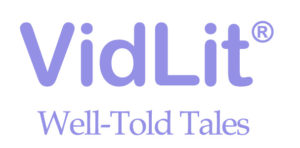

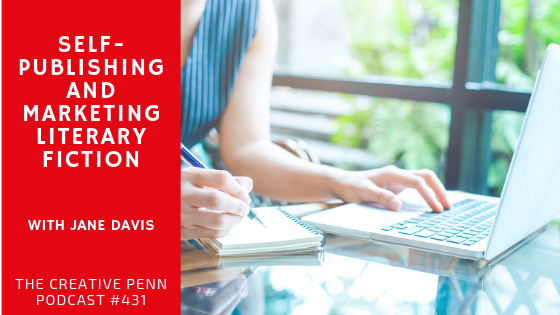


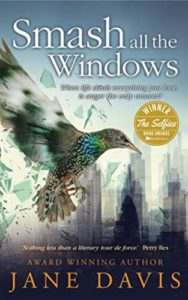
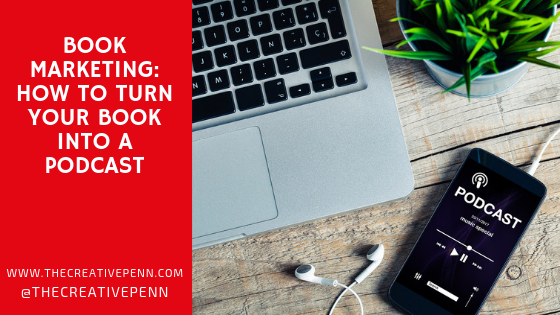
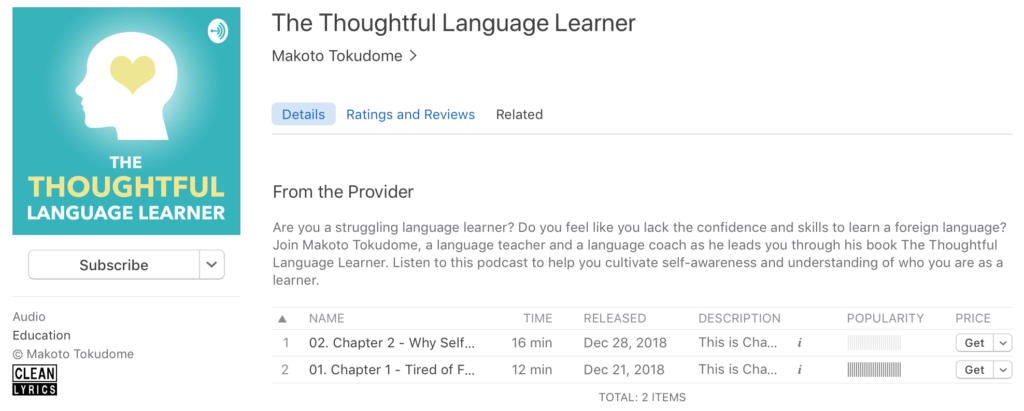
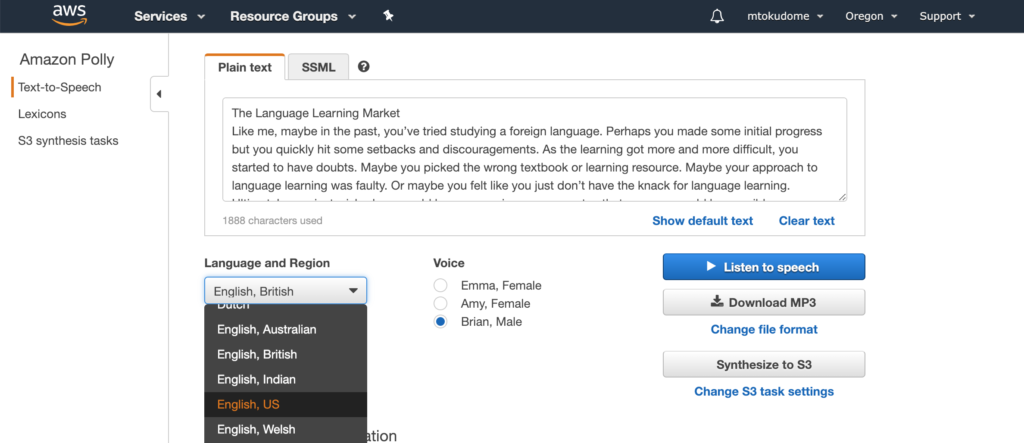

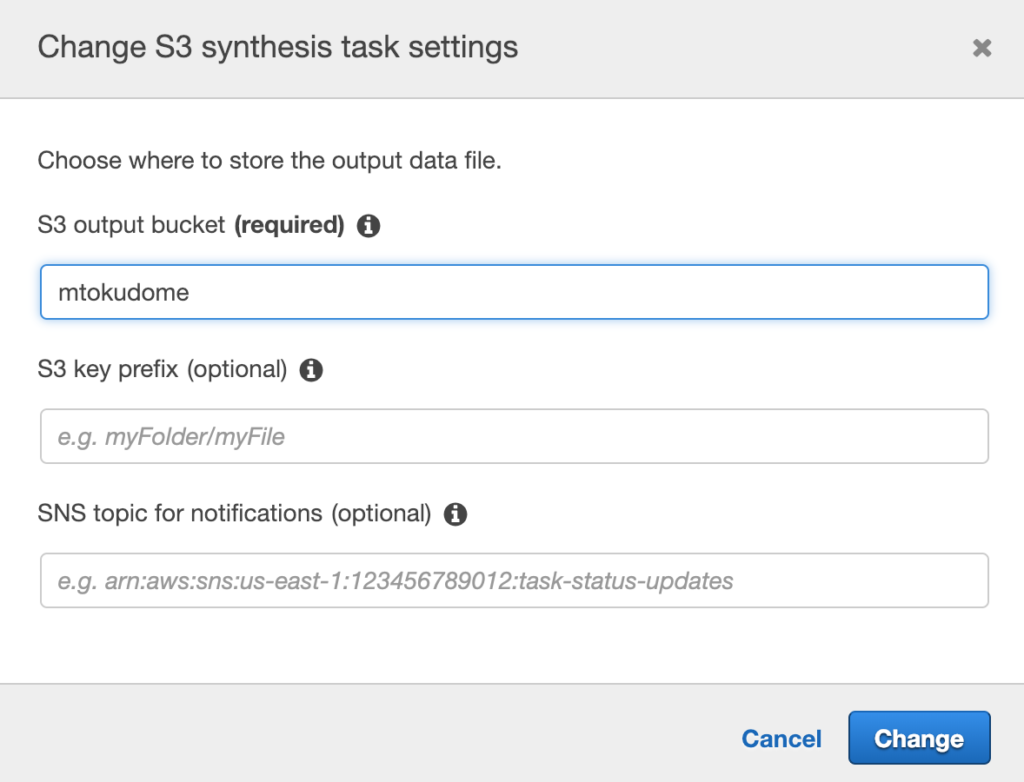
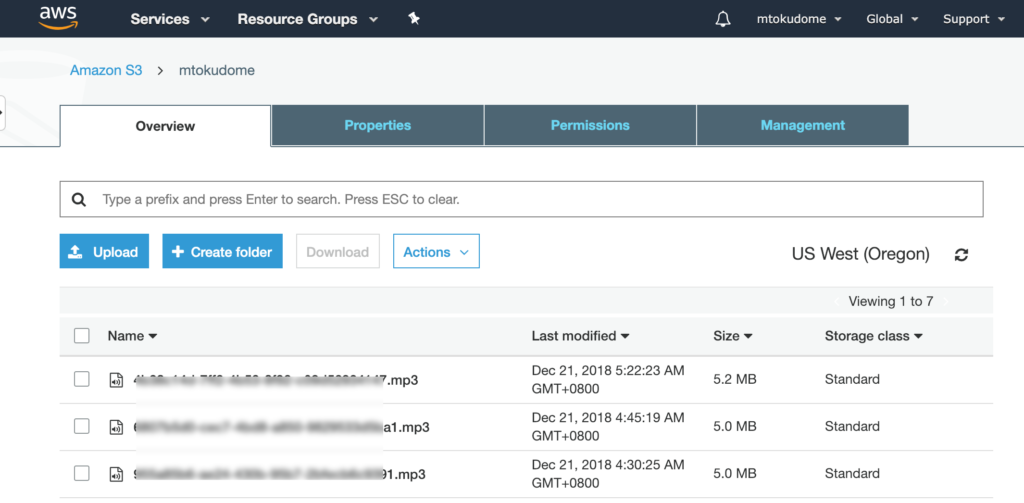
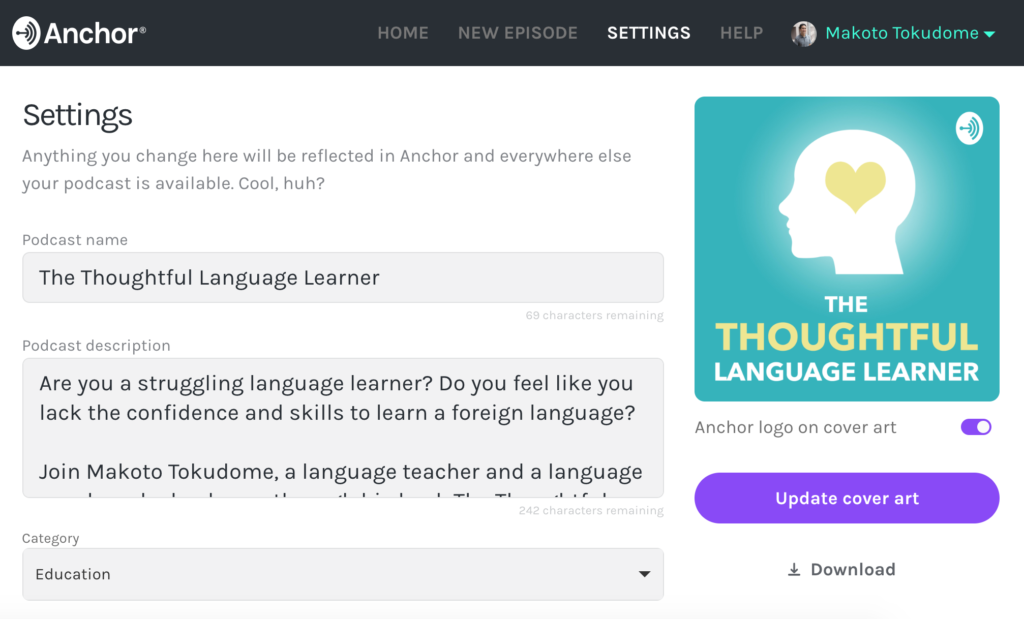
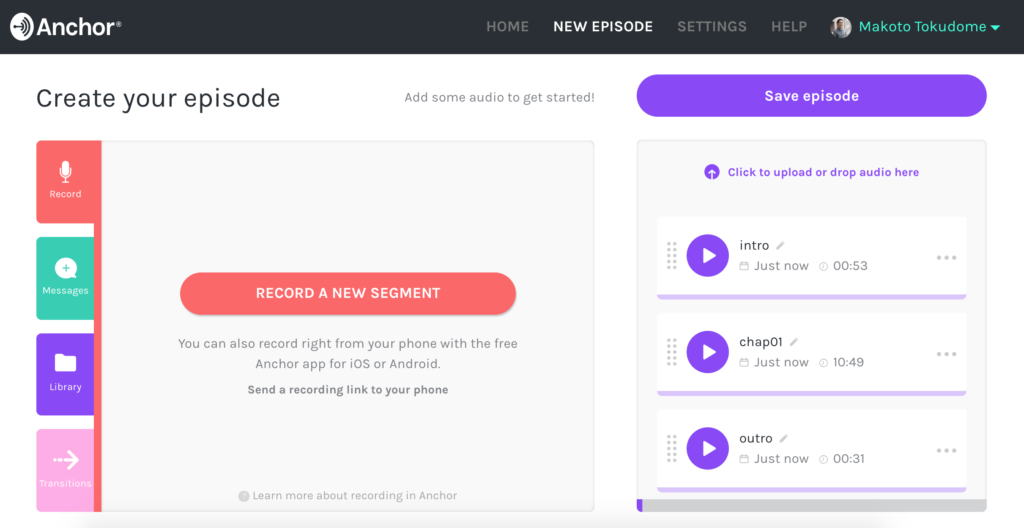
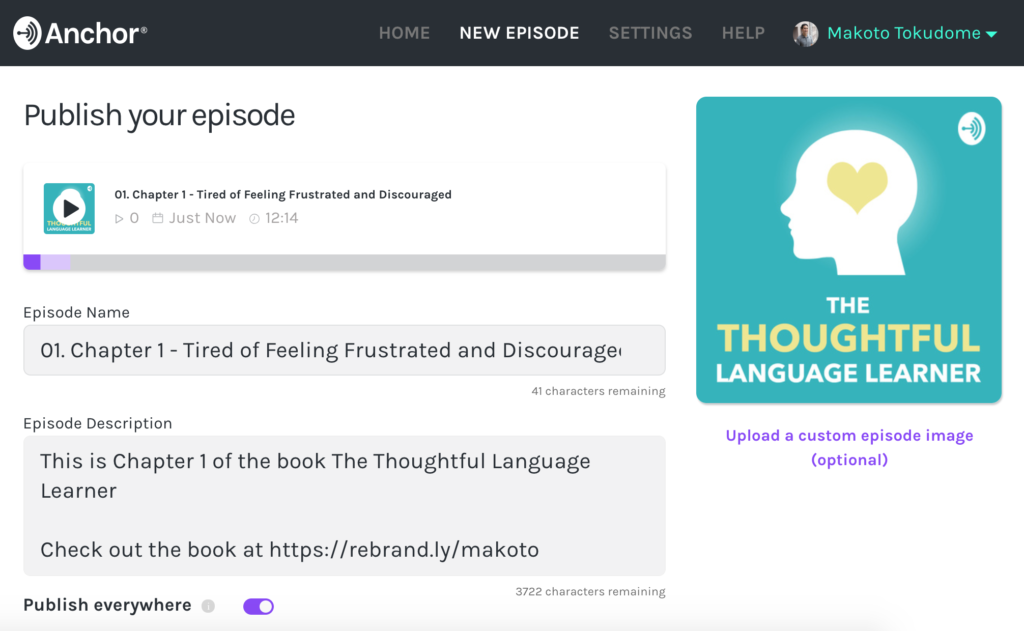

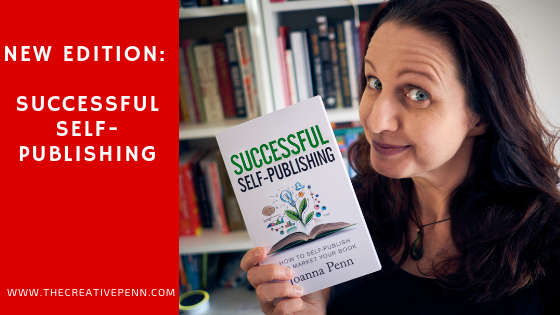 There are thousands of new books being published every day, but many self-published books quickly sink to the bottom of the pile.
There are thousands of new books being published every day, but many self-published books quickly sink to the bottom of the pile.



